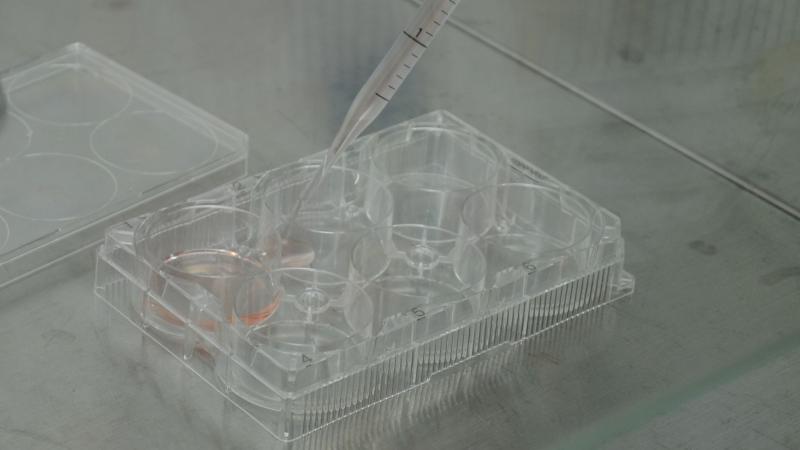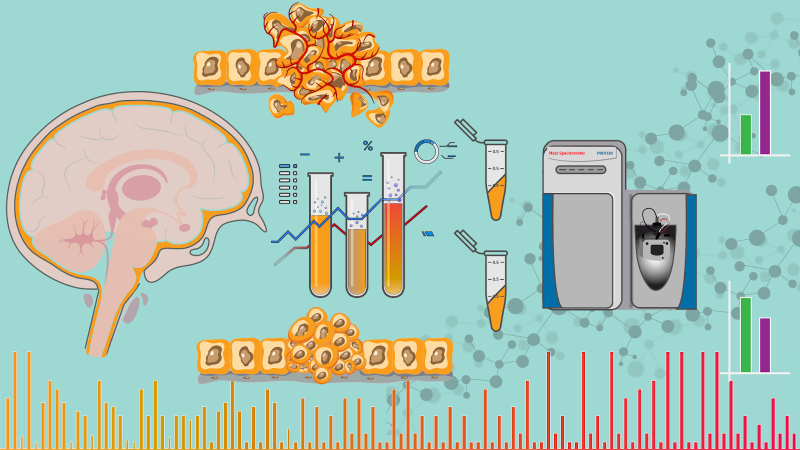
Studying cells grown in a lab, called cell cultures, is essential to our understanding of their growth and functioning in our body. A common cell culture used in such studies is called adherent cells, which require a substrate or a surface to grow on. The chosen substrate usually resembles the extracellular matrix—a group of molecules that surround and support the cell, giving it its shape and structure. In a recent study, researchers at the Indian Institute of Technology Bombay (IIT Bombay) have shown that cell density—the number of cells grown on a unit volume—can also influence the morphology and function of cells.
Adherent cells form ‘adhesion sites’, which are a set of localised contact points on the substrate, with the help of proteins called integrins. These integrins are connected to actin fibres of the cell's skeleton (cytoskeleton) via a complex group of molecules called focal adhesions. When a cell adheres to a substrate, mechanical stimuli are transmitted and converted to biochemical signals through the focal adhesions, and this is crucial for various cellular processes and functions.
In the current study, published in the journal Biomaterials Science, the researchers have observed the growth and cellular traction—the stress exerted by human mesenchymal stem cells—as it spreads on a polyacrylamide substrate. Human mesenchymal stem cells are adult stem cells that are adherent and grow into skeletal, cartilage or fat tissues, depending on the growth environment. The researchers show that not only the substrate stiffness but also the cell density can be tuned to monitor and control the morphology and function of a cell. The study was supported by fellowships from the Wellcome Trust-DBT India Alliance and InStem, Department of Biotechnology.
For their experiments, the researchers prepared polyacrylamide (PAA) gel of different stiffness, coated it with collagen, the protein found in our muscles, bones and skin, and added human mesenchymal stem cells to it. PAA acts as the substrate as it is inert and its stiffness can be controlled. The collagen layer provides the adhesive support to the mesenchymal cells. The researchers used different densities of the stem cells on substrates with different stiffness.
The study found that for a substrate with low stiffness and lesser cellular density, the cells did not spread and were seen to be circular in shape. However, when the cellular density or the substrate stiffness increased, a gradual change was observed. The cells on the substrate started developing directed protrusions and spread preferentially towards their neighbouring cells, reducing the distance between each other. They formed different patterns of strings, network and at sufficiently high density, a near complete monolayer. The individual cells no longer remained circular; instead, they were more polarised in shape.
On investigating further on the observed behaviour, the researchers found the formation of mature focal adhesions and thick actin fibres, indicating a high traction force. Generally, an increase in the cell traction is known to cause an increase in cell spreading, but this is known to occur only on a stiffer or rigid substrate. Here, even on a substrate with low stiffness, the traction force was seen when the cellular density was high. Thus, when the cell density is increased, a soft substrate behaved like a rigid one.
Interestingly, the researchers observed that cell shapes and cell traction in the soft substrate resembled those on the rigid surface. Since this phenomenon was only seen when there was a high cellular density, the clue seemed to lie in the neighbouring cells. Adherent cells can sense strain in the substrate caused by the nearby cells. Initially, the cells randomly spread on the substrate, but when under strain, they form focal adhesion at that site and spread preferentially towards it. If there are neighbouring cells and both the cells sense strain at the same place, the competing pull of the cells may result in stiffening the substrate locally. When such preferential spreading occurs, cells form a pattern over the substrate.
The study presents an intriguing observation related to a cell function called proliferation. Previous studies have shown that human mesenchymal cells grown on a soft substrate tend to remain inactive and dormant. However, the results of the current study point out that at high cellular densities, these cells grown on a soft substrate start proliferating and proceed with their cell cycle, turning the substrate rigid. Thus the cell density can be tuned to switch the cell function from a dormant state to active proliferation.
“Our findings indicate that closely spaced cells sense the tension caused by their neighbours and start spreading in response. In summary, cell crowding and the resultant increase in apparent stiffness due to cellular traction can override many of the known effects of the substrate stiffness on cellular morphology and functions”, observe the authors. Studies like this enhance our knowledge on the factors that affect the cell-matrix and might aid in developing better models for studies related to tissue development.
